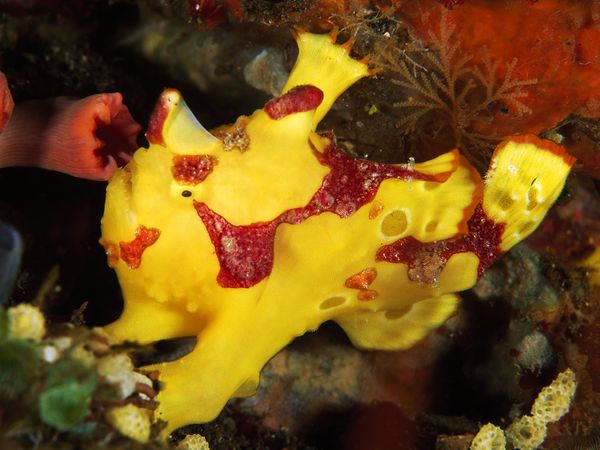
Clown Frogfish
Photograph by Gary Bell, OceanwideImages
A brightly colored clown frogfish shows off its stuff on a reef near Bali, Indonesia. Members of the frogfish family typically keep a much lower profile, relying on the art of camouflage—even changing colors—to stay hidden in their reef homes. Frogfish boast an array of stripes, spots, warts, and other skin anomalies that allow them to impersonate surrounding rocks or plants.
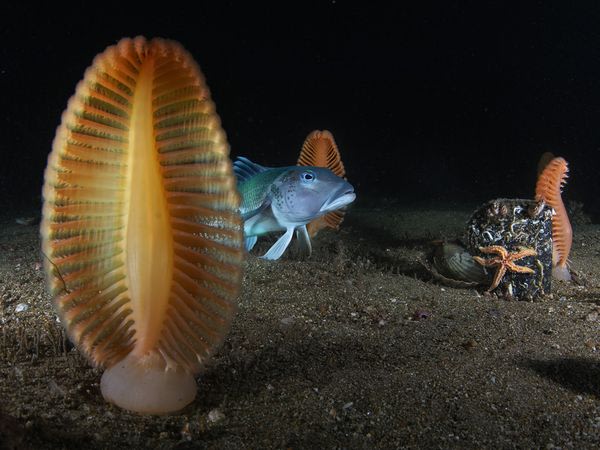
Sea Pens
Photograph by Brian J. Skerry, National Geographic
An almost surreal seafloor tableau unfolds in the shallow waters of Long Sound, New Zealand. A colorful blue cod picks its way through a sparse assemblage of sea pens—named for their resemblance to old-time quill writing implements. Sea pens are actually colonies of tiny, tentacled polyps, which form “branches.” They are rooted to the seafloor by an anchoring bulb—which can serve as sanctuary for the entire colony when threatened.
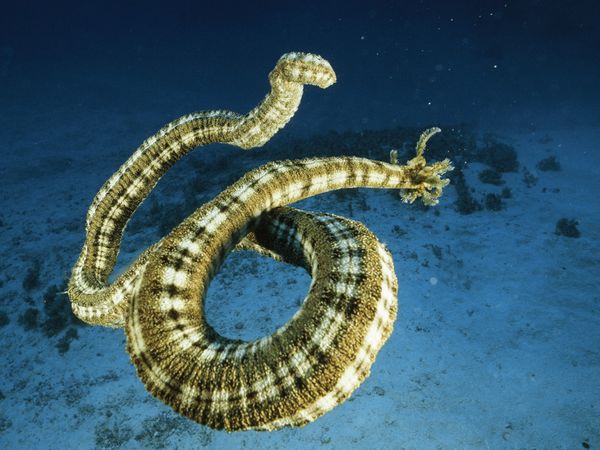
Sea Cucumber
Photograph by Bill Curtsinger, National Geographic
A sea cucumber floats in the waters of Bikini Atoll, once home to a series of infamous nuclear bomb tests. These echinoderms can grow to 6.5 feet (two meters) by feeding on tiny aquatic animals, algae, and even waste material. Sea cucumbers recycle food particles into fodder for bacteria much like worms do in soil. Though they are fairly simple animals, sea cucumbers do have one incredible defense mechanism—the ability to eject internal organs out of their anus and regenerate them later.
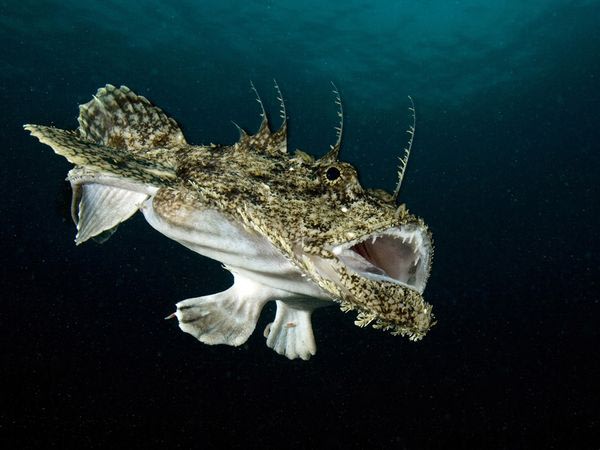
Anglerfish
Photograph by Franco Banfi, SeaPics
An alert anglerfish swims in the cool, dark waters near Norway’s Lofoten Islands. The fish has saggy skin and a distinctive face but is best known for its method of feeding itself. While cruising the seafloor, the fish uses a built-in rod with a tempting filament “lure” that attracts small fish.

Blob Sculpins
Photograph courtesy NOAA Alaska Fisheries Science Center
The blob sculpin’s name may not be flattering but it does capture a bit of the animal’s essence. The 2-foot-long (60-centimeter-long) fish is rather reclusive and not often seen, but blob sculpins have been known to dote on their young. Scientists have observed males guarding rocky seafloor nesting sites, filled with hundreds of pale pink eggs, in mile-deep waters off the California coast.
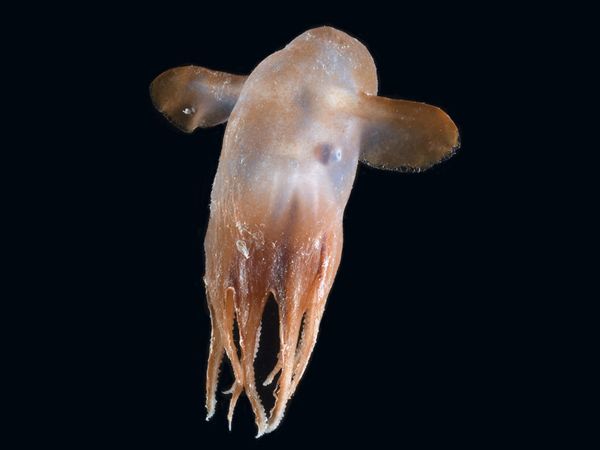
Dumbo Octopus
Photograph by David Shale, Deep Sea Images
The Dumbo octopus, named for its pair of prominent fins, is much smaller than its elephant namesake—it's only about 8 inches (20 centimeters) long—and dwells near the ocean floor at depths of up to 1,310 feet (400 meters). Like other octopuses, it has eight arms, but they are webbed and serve as swimming aids, supplementing the flapping of the giant fins.
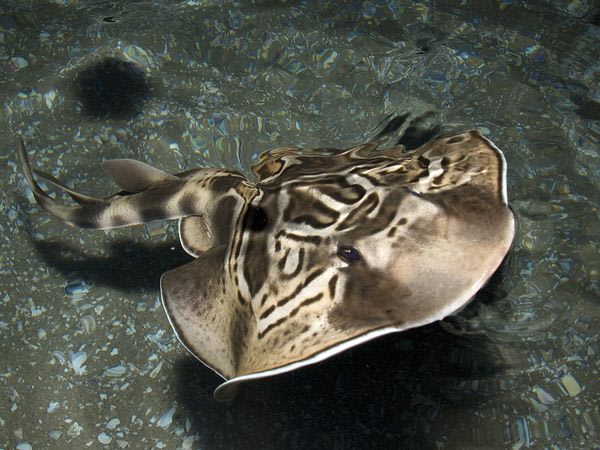
Eastern Fiddler Ray
Photograph by Gary Bell, OceanwideImages
The eastern fiddler ray is an Australian original that haunts the south coastline’s sandy bays and reefs to prey on shellfish and other seafloor invertebrates. The ray, which can grow to 4 feet (1.2 meters), can be spotted by the triangular markings behind its eyes—part of the distinctive coloring and shape that have earned this animal the nickname “banjo shark.”
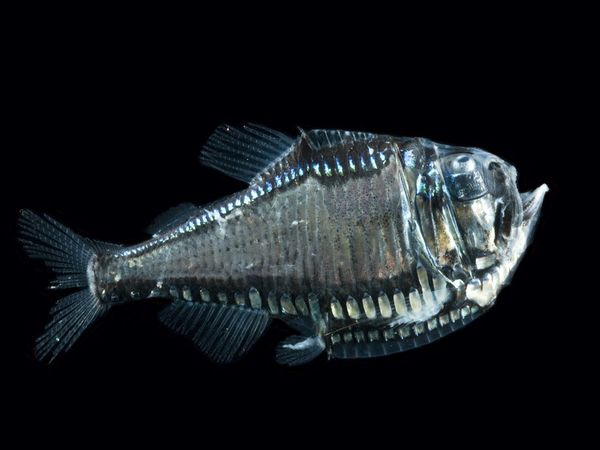
Giant Hatchetfish
Photograph by David Shale, Deep Sea Images
At less than 5 inches (11 centimeters) long, the giant hatchetfish isn’t the behemoth its name suggests, but it does have some big league abilities. The deep-sea dweller boasts a row of light-producing organs lined up along its belly, the “blade” on its hatchet body. These bioluminescent organs shine like daylight from above the ocean surface, creating counterillumination to confuse predators that strike dark silhouettes from below. Hatchetfish swim in temperate and tropical seas all over the world.

Red-Lipped Batfish
Photograph by David Doubilet, National Geographic
This photogenic fish has red lips and fins made for walking the seafloor near the Galápagos Islands. The red-lipped batfish is one of some 60 species of batfishes, “flattened” from life on the seafloor and adapted to walk on modified pectoral and pelvic fins. Like other anglerfishes, batfishes also use a built-in fishing rod snout, equipped with a retractable appendage, to lure prey close to their lips—which, by the way, appear far less conspicuous without a photographer’s flash.
No comments:
Post a Comment